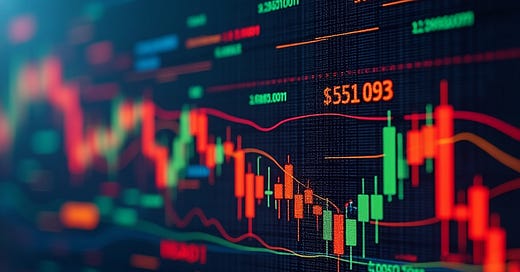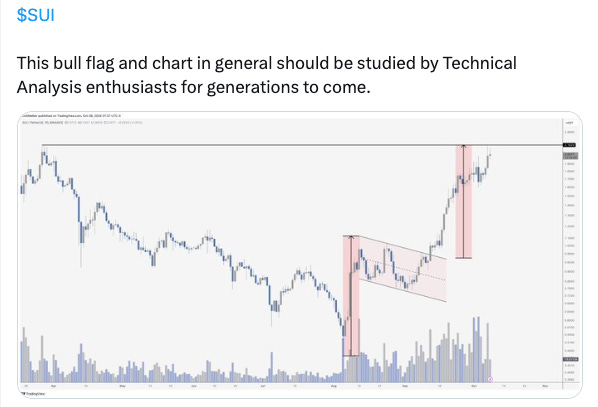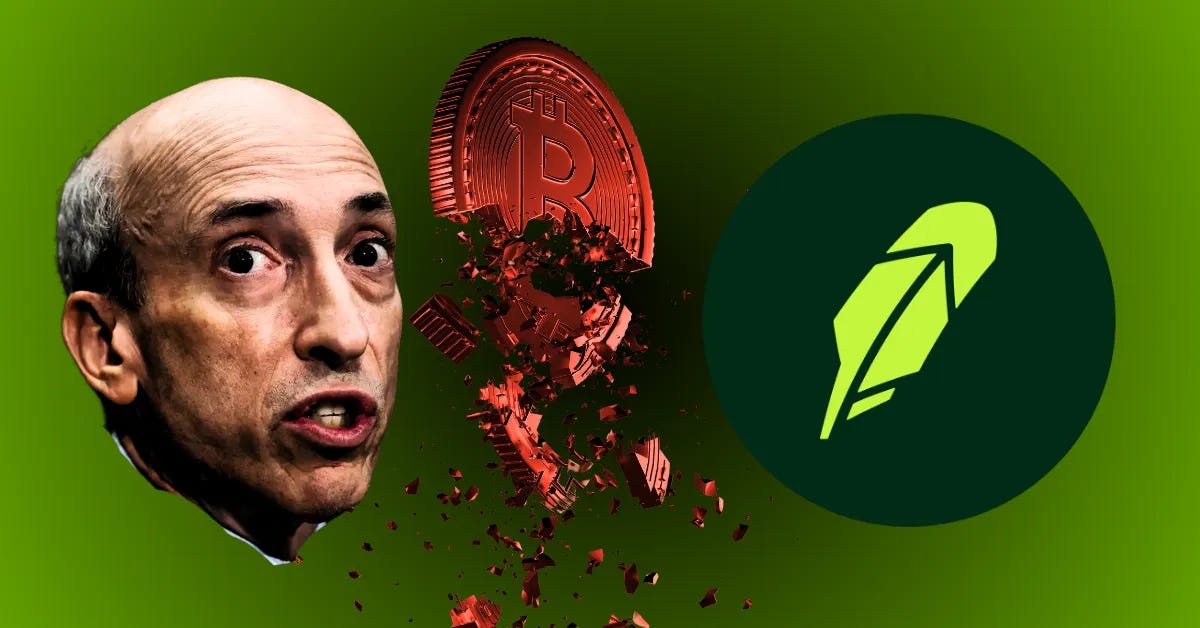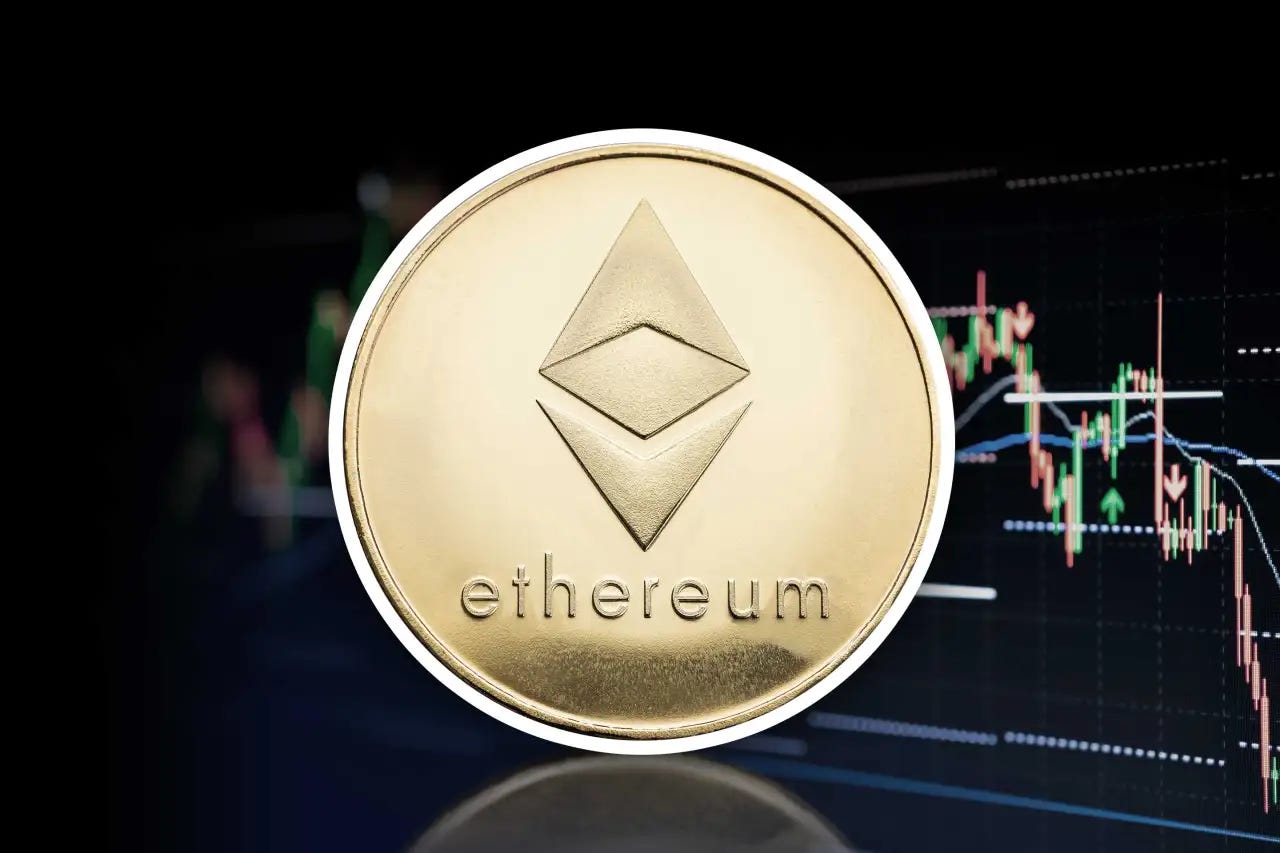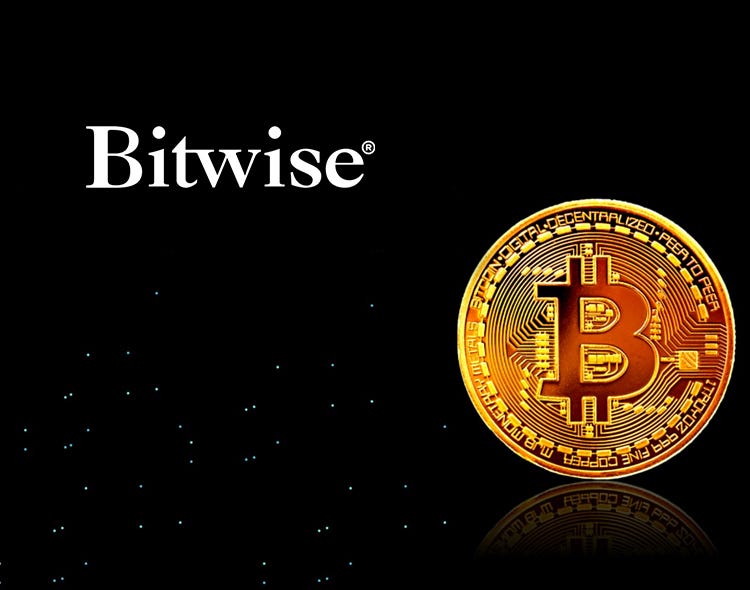Welcome to The Wolf Den! This is where I share the news, my ideas about the market, technical analysis, education and my random musings. The newsletter is released every weekday and is completely FREE. Subscribe!
Trading Alpha Released A Brand New Product!
One of the partners of this newsletter, Trading Alpha, my trusted indicator and trading community, has launched their proprietary Indicator Search Engine for All Markets. This custom Indicator Screener scans crypto, stocks, and forex markets for Trading Alpha indicator setups, eliminating the need for time-consuming manual analysis. It can simultaneously screen for multiple indicators, enhancing confluence and providing advanced analysis capabilities across different markets. This is cutting-edge technology for serious traders.
Make sure to use my link HERE if you plan on giving it a try.
In This Issue:
A Random Walk
Bitcoin Thoughts And Analysis
Altcoin Charts
Legacy Markets
Ethereum Is The MTA, Solana Is Uber
Dan Gallagher May Become SEC Chairman
There’s A New Upgrade Coming To Ethereum
Bitwise Files For Fund Changes
Two Things To Note With FTX Payments
How Big Will The Next Rate Cut Be? Major Implications For Bitcoin & The US Economy | Macro Monday
A Random Walk
Not all finance books are created equal.
If you haven’t yet read *A Random Walk Down Wall Street*, I highly recommend picking up a copy. My favorite section is in Chapter 6, where Burton G. Malkiel delves into Random-Walk Theory—a fascinating and, frankly, hilarious concept that I can’t wait to share with you.
Random-Walk Theory suggests that stock prices move unpredictably, much like a random walk. But that can't be true, right? After all, technical analysis is a central focus of this newsletter and is supposed to be a powerful tool… isn't it? Today, we’re going to challenge some of these assumptions. This is going to be fun.
Here’s where it all starts:
“To many people, this appears to be errant nonsense. Even the most casual reader of the financial pages can easily spot patterns in the market. For example, look at the stock chart on page 138. The chart seems to display obvious patterns. After an initial rise, the stock turned down, and then headed persistently downhill. Happily for the bulls, the decline was arrested and the stock had another sustained upward move. One cannot look at a stock chart like this without noticing the self-evidence of these statements. How can the economist be so myopic that he cannot see what is so plainly visible to the naked eye?”
Get ready to rethink some old beliefs!
What I'll never forget is the author’s revelation that the chart being discussed isn’t even from a real stock—it’s a statistical illusion, a hypothetical stock. The chart was created by a group of students given a simple instruction: start the stock at $50 per share. Each night, they flipped a coin. If it landed heads, the stock price rose by 1/2 a basis point; if tails, it dropped by 1/2 a basis point. In other words, the chart is nothing more than a random graph, created by students flipping a coin.
“The chart derived from random coin tossings looks remarkably like a normal stock price chart and even appears to display cycles. Of course, the pronounced ‘cycles’ that we seem to observe in coin tossings do not occur at regular intervals as true cycles do, but neither do the ups and downs in the stock market.”
Malkiel explains that the so-called ‘cycles’ in the stock market are really just streaks of luck or misfortune. The idea that some stocks seem to be in a downtrend or uptrend is merely an illusion, offering no reliable insight into future movements. This next part always cracks me up:
“In other simulated stock charts derived from student coin-tossings, there were head-and-shoulders formations, triple tops and bottoms, and other more esoteric chart patterns. One chart showed a beautiful upward breakout from an inverted head and shoulders (a very bullish formation). I showed it to a chartist friend of mine who practically jumped out of his skin. ‘What is this company?’ he exclaimed. ‘We’ve got to buy immediately. This pattern’s a classic. There’s no question the stock will be up 15 points next week.’ He did not respond kindly when I told him the chart had been produced by flipping a coin. Chartists have no sense of humor. I got my comeuppance when *BusinessWeek* hired a technician adept at hatchet work to review the first edition of this book.”
Imagine if I started a YouTube series where only my newsletter readers were in on the secret. I’d invite well-known crypto technical analysts, show them charts of 'stocks' that I actually created by flipping a coin 100 times—we’d fool them easily. As Malkiel describes, I doubt they’d be happy to learn the truth, but it would perfectly illustrate just how real this concept is. I bet it would work.
Now, let me clarify: I'm not here to trash technical analysts. It's no secret that I use technical analysis just like everyone else. I enjoy spotting bullish divergences, identifying cup-and-handle patterns in altcoins, and discussing the four-year Bitcoin cycle. If I were truly against technical analysis, I'd be a lunatic!
Burton G. Malkiel is skeptical of technical analysis, which makes it valuable to consider his perspective. He argues that stock prices behave randomly, and that historical price movements and patterns fail to reliably predict future changes. Malkiel champions the Efficient Market Hypothesis (EMH), which posits that markets are efficient and that all available information is already reflected in stock prices. As a result, he believes relying on technical analysis or chart patterns is not a sound investment strategy. However, his argument isn’t simply to replace technical analysis with fundamental analysis; doing so would just echo countless other finance books. Let’s dig deeper.
“And even during periods when momentum is present (and the market fails to behave like a random walk), the systematic relationships that exist are often so small that they are not useful to investors. The transactions charges and taxes involved in trying to take advantage of these dependencies are far greater than any profits that might be obtained. Thus, an accurate statement of the “weak” form of the random-walk hypothesis goes as follows: The history of stock price movements contains no useful information that will enable an investor consistently to outperform a buy-and-hold strategy in managing a portfolio.”
Read that bolded sentence two more times!
This is exactly why I limit my trades to no more than 15% of my portfolio. I recognize that I’m playing a much harder game when trading. That said, with that 15%, I’m fairly confident in my ability to generate diversified and higher returns than a traditional buy-and-hold strategy would offer with that same amount. At this size, my emotions don’t get triggered, and I alternate that 15% between serving as a hedge or adding leverage. Sure, some trades go well while others don’t, but I genuinely enjoy trading, and over time, it tends to work out in my favor.
Before wrapping up, I want to highlight a counter-argument to Malkiel that often gets overlooked. Technical analysis works because, fundamentally, it captures human emotions. Even in today’s world of algorithmic trading, where bots handle trades, these algorithms are influenced by the emotions and decisions of their programmers and the broader market participants. While emotions can’t always be clearly identified from a chart’s price action, there are moments when blending technical analysis with sentiment analysis becomes the most effective method for forecasting price movements.
Many of you are here because you trusted my viral market commentary during the highs and lows of 2017, 2018, 2020, and 2021, which was heavily rooted in technical analysis—my interpretation of human emotions. You can be sure I’ll continue that approach when the market finally presents clear opportunities again. Given that crypto is still largely retail-dominated, I believe technical analysis remains highly relevant.
On a different note, a serious hurricane is headed straight for Florida, where I live, so the newsletter may be a bit inconsistent this week if the power goes out and my focus shifts.
Godspeed and stay safe if you're in Florida—this one is no joke.
Bitcoin Thoughts And Analysis
Bitcoin printed an ugly candle yesterday, with a long wick up and small body. This indicates that bulls were unable to make headway, finding resistance at the 200 MA.
We are stuck between the 2 major moving averages… but still just chopping sideways.
One day we will have something meaningful to talk about on the Bitcoin chart!
Altcoin Charts
For those who are new here, I share SETUPS and not SIGNALS. These are ideas that I am watching - if a certain thing happens, then the trade triggers. I am not telling you what to buy or when. I am showing you how I am watching certain charts and what has to happen for me to take a trade.
As for whether technical analysis works or not….
This was something I shared on the website (now being redesigned) when it was still in a bull flag. If played out nearly perfectly. Luck? Maybe. But there are time when charts are clearly helpful tools.
Legacy Markets
U.S. equity futures rose slightly on Tuesday, recovering from earlier losses as traders focused on upcoming inflation data, which will influence the Federal Reserve’s interest-rate decisions. S&P 500 and Nasdaq 100 futures gained 0.3%, following a Monday dip caused by reduced expectations of rate cuts and higher U.S. bond yields. Treasury yields remained steady around 4%.
Investors are awaiting Thursday's Consumer Price Index (CPI) report, with inflation expected to slow to 2.3% year-over-year, down from 2.5%. This data is seen as particularly crucial due to potential disruptions from ongoing hurricanes and worker strikes, which could affect upcoming jobs reports. The market is pricing in a minor rate cut by the Fed in November, with expectations for 48 basis points of easing by year-end.
Meanwhile, premarket movers included Super Micro Computer Inc., which rose on strong server demand, and Honeywell, which gained on news of plans to spin off its advanced materials division. On the downside, U.S.-listed Chinese shares and China-exposed European stocks dropped after Beijing's latest economic support measures fell short of investor expectations.
Commodity markets also reacted to the lack of new China stimulus, with Brent crude futures falling 2%. Additionally, U.S. banks will kick off the earnings season on Friday, with investor focus turning to their guidance for 2025.
Key events this week:
Fed’s Raphael Bostic, Susan Collins, Philip Jefferson and Adriana Kugler speak, Tuesday
Fed minutes, Wednesday
Fed’s Lorie Logan, Raphael Bostic, Austan Goolsbee and Mary Daly speak, Wednesday
US initial jobless claims, CPI, Thursday
Fed’s John Williams and Thomas Barkin speak, Thursday
JPMorgan, Wells Fargo kick off earnings season for the big Wall Street banks, Friday
US PPI, University of Michigan consumer sentiment, Friday
Fed’s Lorie Logan, Austan Goolsbee and Michelle Bowman speak, Friday
Some of the main moves in markets:
Stocks
The Stoxx Europe 600 fell 0.6% as of 11:34 a.m. London time
S&P 500 futures rose 0.3%
Nasdaq 100 futures rose 0.4%
Futures on the Dow Jones Industrial Average rose 0.1%
The MSCI Asia Pacific Index fell 2.1%
The MSCI Emerging Markets Index fell 2.1%
Currencies
The Bloomberg Dollar Spot Index was little changed
The euro rose 0.1% to $1.0988
The Japanese yen rose 0.2% to 147.85 per dollar
The offshore yuan rose 0.2% to 7.0559 per dollar
The British pound rose 0.1% to $1.3098
Cryptocurrencies
Bitcoin fell 0.9% to $62,429.91
Ether fell 0.5% to $2,428.54
Bonds
The yield on 10-year Treasuries was little changed at 4.02%
Germany’s 10-year yield was little changed at 2.25%
Britain’s 10-year yield was little changed at 4.20%
Commodities
Brent crude fell 2% to $79.31 a barrel
Spot gold was little changed
Ethereum Is The MTA, Solana Is Uber
Credit goes to Jeff Park, Bitwise’s head of Alpha Strategies, for this segment. I’m sharing this analogy because it turned a rather complex topic into something easy to understand and digest.
“Ethereum is the MTA, Solana is Uber
I’m often asked to explain the difference between Ethereum and Solana by the US financial advisor and RIA community. These professional investors are well-versed in investment management but often struggle with the technical intricacies of blockchain technology. To make things more relatable, I developed a non-technical analogy using a transportation logistics metaphor centered on New York City.
Ethereum is the MTA.
Ethereum, like the MTA, is the oldest, widest used public network in North America. It has an undeniable lead in scale with the broadest range of customers, just as the MTA is an indispensable way of life in New York. Like the MTA, Ethereum is the closest thing to a “public utility” in the blockchain community with strong incumbency, and it will never go extinct.
If the MTA is Ethereum, then the Bus and Subways are its Layer 2s. These are cost-efficient, used by all for its cheapness, and there’s a decent amount of interoperability (you can get off the bus and on to the train - for no extra charge!). But the unit economics of how the L2s scale to MTA’s profitability is something that noone dares to solve. We just know it is too big to fail.
At the same time, the MTA has a load of legacy debt that makes it insufferable. It is bureaucratic, slow, and extremely expensive to make changes that require Herculean coordination. But when they do move, they move with big commitment generally into the right direction. Still, its “oracles” (like train signals) are technically outdated and the system often congests - though it doesn’t ever go down completely. This is much like Ethereum. Everyone knows their technical debt is high and subpar in various ways, but the incumbency of its existing network makes it challenging to remediate.
Solana is Uber.
Just like Solana has a global single state machine, Uber has the most accurate awareness of the transportation situation live-time at the unit level of a person - and Uber’s logistics coordinate with a singular focus on delivering fast, efficient, services.
Solana, like Uber, also emphasizes the user experience. People really like riding Ubers because it’s easy, intuitive, and theoretically cheaper versus other options (away from the regulatory capture of TLC). Solana also a true commercial mindset in seeking partnerships to grow utility that serves an end customer well.
Yet, both Solana and Uber share one significant trait: their addressable markets (TAM) are massive and difficult to quantify. Uber’s TAM is anything and everything it wants to tack on to its network (from UberEats, Uber courier, etc.) just as Solana tacks on everything it can imagine as well (from DePin, DeFi, PayFi, Gaming etc). In that sense, they both benefit and suffer from the valuation model that human psychology cannot comprehend: how to charge the most infinitesimal profit margin on the most astronomical TAM (0.000001% on 100 Trillion dollars) makes the valuation exercise almost intangible.
Also when Uber goes down, it goes down completely. In their defense, it’s rare and it usually comes back online - but it’s a differentiated point versus the MTA whose multiple assets don’t ever all go out 100% at once.
So what is more valuable - the MTA or Uber?
When asked in this manner, the answer is not so obvious. The MTA is clearly a prized asset and New York can never part with it. Uber appears to have more commercial opportunities ahead, but its network effect is nowhere nearly as powerful as a 60y old institution. So your answer is most likely going to reflect your own values: what your belief systems are about what is valuable in the world for whom.
This raises the final question - if Ethereum is the MTA, and Solana is Uber, what is Bitcoin? To that I have a simple answer.
Bitcoin is the land of Manhattan, of course—the foundation upon which everything is built.”
Dan Gallagher May Become SEC Commissioner
Dan Gallagher, Robinhood's Chief Legal Officer, is emerging as a top contender to head the SEC should Donald Trump reclaim the presidency, according to insights from a dozen former senior regulators, lobbyists, and securities lawyers. What may come as a surprise is that Gallagher previously served as an SEC commissioner from 2011 to 2015, appointed by President Barack Obama, before transitioning back to the private sector. The issue with Gallagher’s candidacy is that the SEC is currently investigating Robinhood over matters related to crypto, which could raise concerns about conflicts of interest if he were to take the job. It's unclear how significant this issue might be, but it could complicate his path to leading the agency. The good news is that Gallagher has publicly stated that Robinhood has done nothing wrong, so if he were to become chairman, he’d probably be a great fit. This would bode incredibly well for crypto.
There’s A New Upgrade Coming To Ethereum
Ethereum developers have recently proposed (Ethereum improvement proposal) EIP-7781 to reduce block times from 12 seconds to 8 seconds, designed to boost transaction throughput by 50%. Led by Ben Adams, co-founder of Illyriad Games, this initiative is supposed to enhance user experiences and benefit Layer 2 solutions by also lowering transaction costs. Well-known Ethereum Foundation researcher Justin Drake has come out in support of the upgrade, however, there are concerns about increased bandwidth requirements and hardware demands for validators. Overall, EIP-7781 promises to improve transaction speed, attract new users, and stabilize network performance.
Bitwise Files For Fund Changes
This is an interesting move: Bitwise has filed with the SEC to modify the investment strategies of its three Bitcoin and Ethereum futures ETFs. The funds—Bitwise Bitcoin Strategy Optimum Roll ETF (BITC), Bitwise Ethereum Strategy ETF (AETH), and Bitwise Bitcoin and Ether Equal Weight Strategy ETF (BTOP)—will be converted into trend-following strategies that rotate between crypto and U.S. Treasuries based on market conditions. How it’s going to work is that Bitwise will rely on proprietary signals that analyzes the 10- and 20-day exponential moving averages of crypto prices meaning the ETFs will invest in crypto during upward trends and shift to Treasuries during downturns. The changes will take effect on December 3, 2024, with no action required from current investors. So far this year, Bitwise has seen significant success, with the launch of its spot Bitcoin and Ethereum ETFs, attracting over $10 billion in net inflows.
Two Things To Note With FTX Payments
Before you leave, look at this:
And this…
FTX creditors are still screwed, and that ‘massive’ liquidity injection isn’t coming until later anyways.
How Big Will The Next Rate Cut Be? Major Implications For Bitcoin & The US Economy | Macro Monday
Join Dave Weisberger, Mike McGlone, and James Lavish as we break down what's happening in macro and crypto!
My Recommended Platforms And Tools
Phemex - Exclusive for new users, earn up to 8800 USDT. Also for a limited time, if you mint your soul pass you will pay no gas fees and enjoy VIP benefits. Use MY LINK to get the rewards!
Arch Public - It’s a hedge fund in your pocket. Built for retail traders, designed to outperform Wall Street. Try emotionless algorithmic trading at Arch Public today.
Trading Alpha - Trade With Confidence! My new go-to indicator site and trading community. Use code '10OFF' for a 10% discount.
X - I spend most of my time on X, contributing to CryptoTownHall every weekday morning, sharing random charts, and responding to as many of you as I can.
YouTube - Home of the Wolf Of All Streets Podcast and daily livestreams. Market updates, charts, and analysis! Sit down, strap in, and get ready—we’re going deep
The views and opinions expressed here are solely my own and should in no way be interpreted as financial advice. Every investment and trading move involves risk. You should conduct your own research when making a decision. I am not a financial advisor. Nothing contained in this e-mail constitutes or shall be construed as an offering of financial instruments or as investment advice or recommendations of an investment strategy or whether or not to "Buy," "Sell," or "Hold" an investment.

